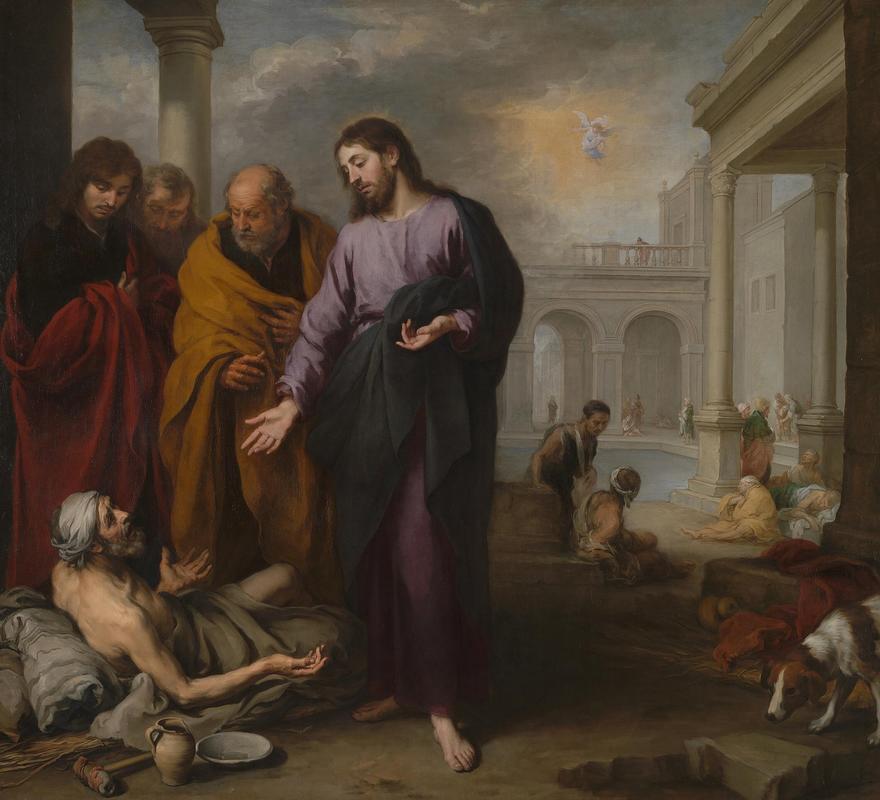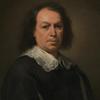More about Christ Healing the Paralytic at the Pool of Bethesda

Contributor
The French stole Bartolome Esteban Murillo’s Christ Healing the Paralytic at the Pool of Bethesda directly out of a church after they invaded Seville during their 1810 conquest of Spain.
The French Duke Nicolas-Jean de Dieu Soult then sent the painting, along with many others, back to Paris. This seems more or less normal for the time, but there are three significant problems with the Duke’s actions. To begin with, he stole religious art from the walls of a church - talk about bad karma. Then, on top of that, he separated the paintings. I mean if you’re going to steal paintings from a church, at least keep them together as the cohesive unit they were intended to be. Then to make everything a bit worse, the painting and its five companion pieces were initially donated by Murillo to the hospital’s holy charity under the universal theme of mercy and charity. So to put it all together, Duke Dieu Soult stole hospital charity art from a church, and at the same time, ruined the integrity and message of the pieces he stole by separating the themed set. Art historians, priests, and non-profit employees are collectively rolling over in their graves. To make up for the missing four pieces, the church has since purchased four hand-painted copies in 2007.
In time, Christ Healing the Paralytic at the Pool of Bethesda was passed from collector to collector until it ended up in the National Gallery of London, completely isolated from its sextet of paintings.
Christ Healing the Paralytic at the Pool of Bethesda addresses a parable from the new testament of the Bible. Angels would occasionally visit the pool of Bethesda, and when they did, the first human to enter the water would be healed of their worst malady. Jesus came across a paralyzed man near the water who continuously tried to immerse himself after angels visited, but he couldn’t get there quickly enough. Jesus took pity on the man and healed him., The painting represented one of the seven acts of charity - Visiting the Sick. Five other acts of charity were also painted by Murillo, and the seventh was represented by a sculpture in the center of the church.
Sources
- "BibleGateway." Leviticus 19:11 NIV - - Bible Gateway. Accessed July 24, 2018. https://www.biblegateway.com/passage/?search=John 5&version=NET.
- Gallery, London The National. "Christ Healing the Paralytic at the Pool of Bethesda." The National Gallery. Accessed July 24, 2018. https://www.nationalgallery.org.uk/paintings/bartolome-esteban-murillo-…
- Wecker, Menachem. "Piecing Together the Histories of a Series of Stolen Paintings." Hyperallergic. May 17, 2017. Accessed July 24, 2018. https://hyperallergic.com/378315/piecing-together-the-histories-of-a-se….
Featured Content
Here is what Wikipedia says about Christ Healing the Paralytic at the Pool of Bethesda

Christ Healing the Paralytic at the Pool of Bethesda is a 1667-1670 oil on canvas painting by Bartolomé Esteban Murillo, now in the National Gallery, London, to which it was presented by the Art Fund, which had bought it for £8,000 the body had been given by Graham Robertson's executors. It had been in Paris by 1812 before being acquired by Colonel George Tomline and remaining in British private collections until 1950.
The work is one of eight paintings commissioned for Seville's Hermandad de la Caridad, to which the artist himself belonged and one of whose commandments was to clothe the naked. Four of those eight works remain in Seville (The Miracle of the Loaves and Fishes, Moses at the Rock of Horeb, Saint Elizabeth of Hungary and Saint John of God Carrying a Sick Man), whereas the London work and the other three were looted by Napoleon's army in 1810 (The Return of the Prodigal Son, National Gallery of Art, Washington; Abraham Receiving the Three Angels, National Gallery of Canada; The Liberation of Saint Peter, Hermitage Museum).
Check out the full Wikipedia article about Christ Healing the Paralytic at the Pool of Bethesda












